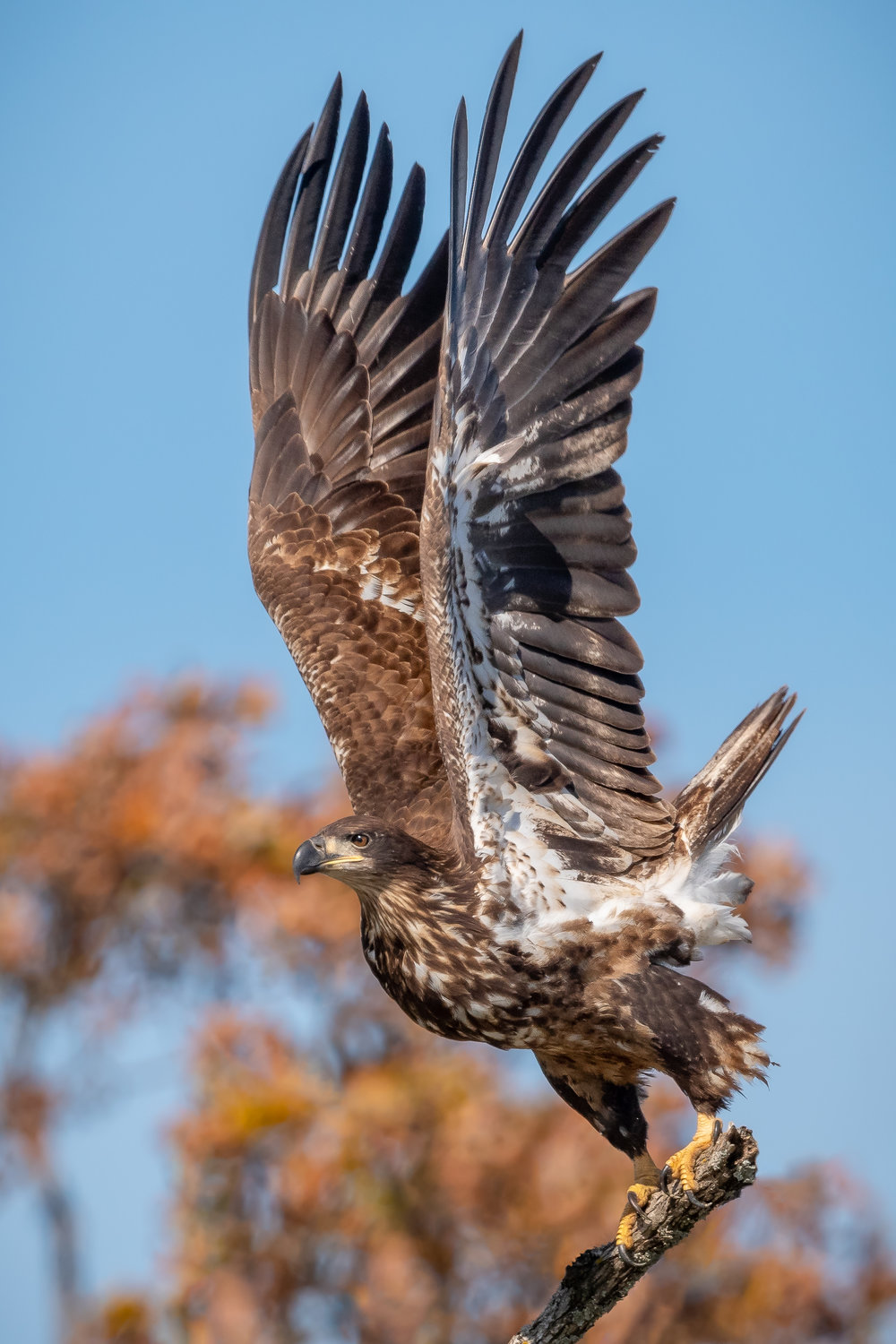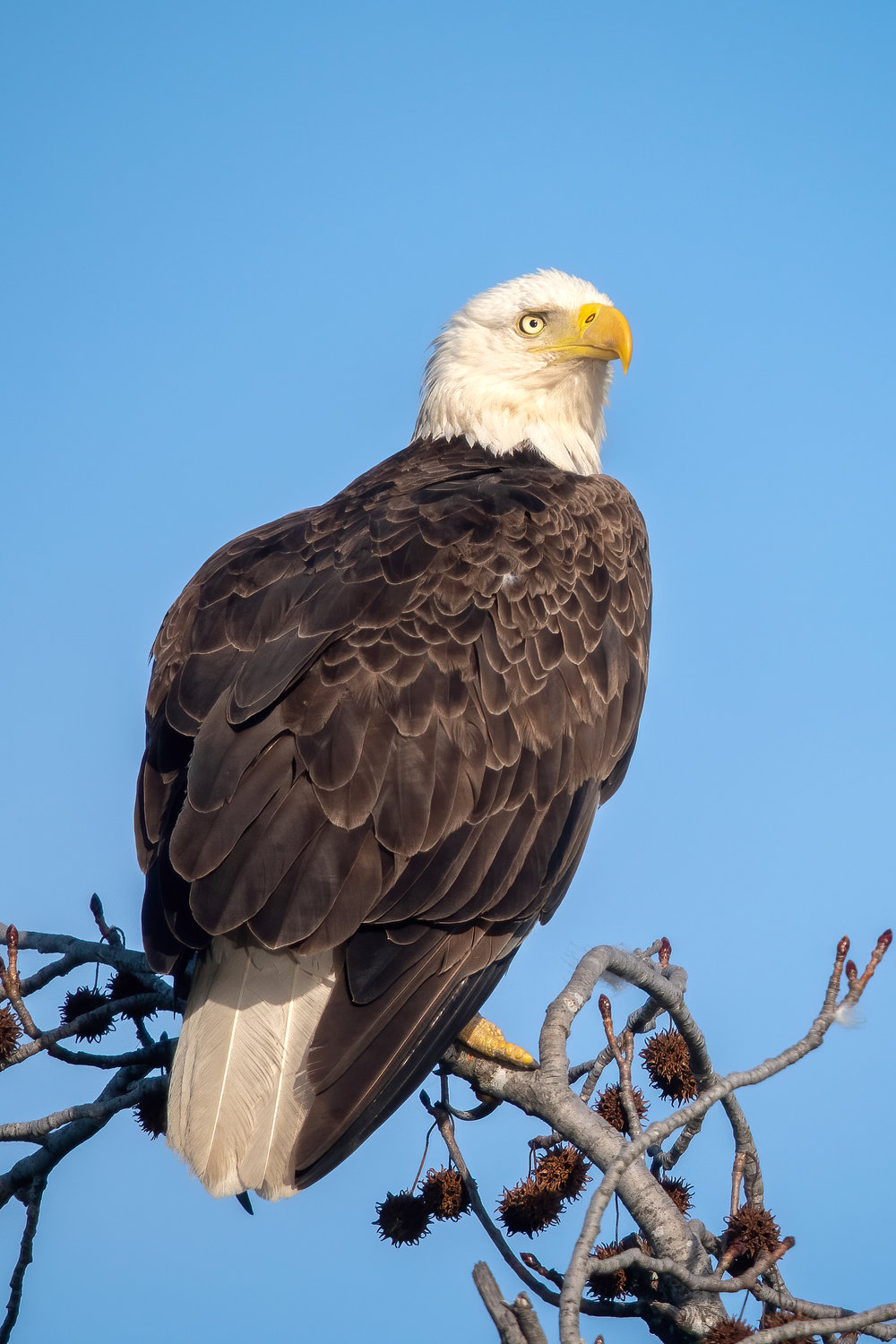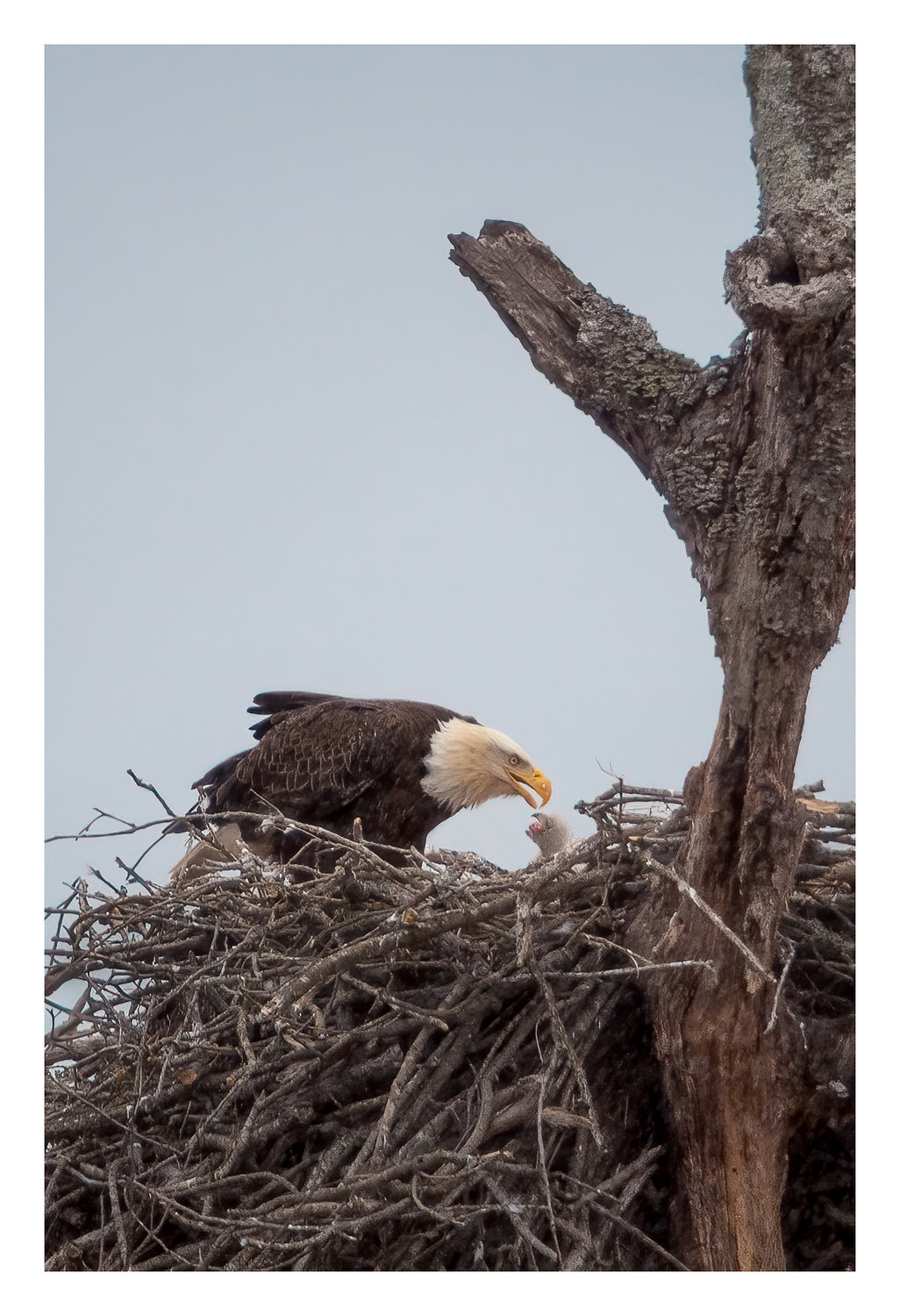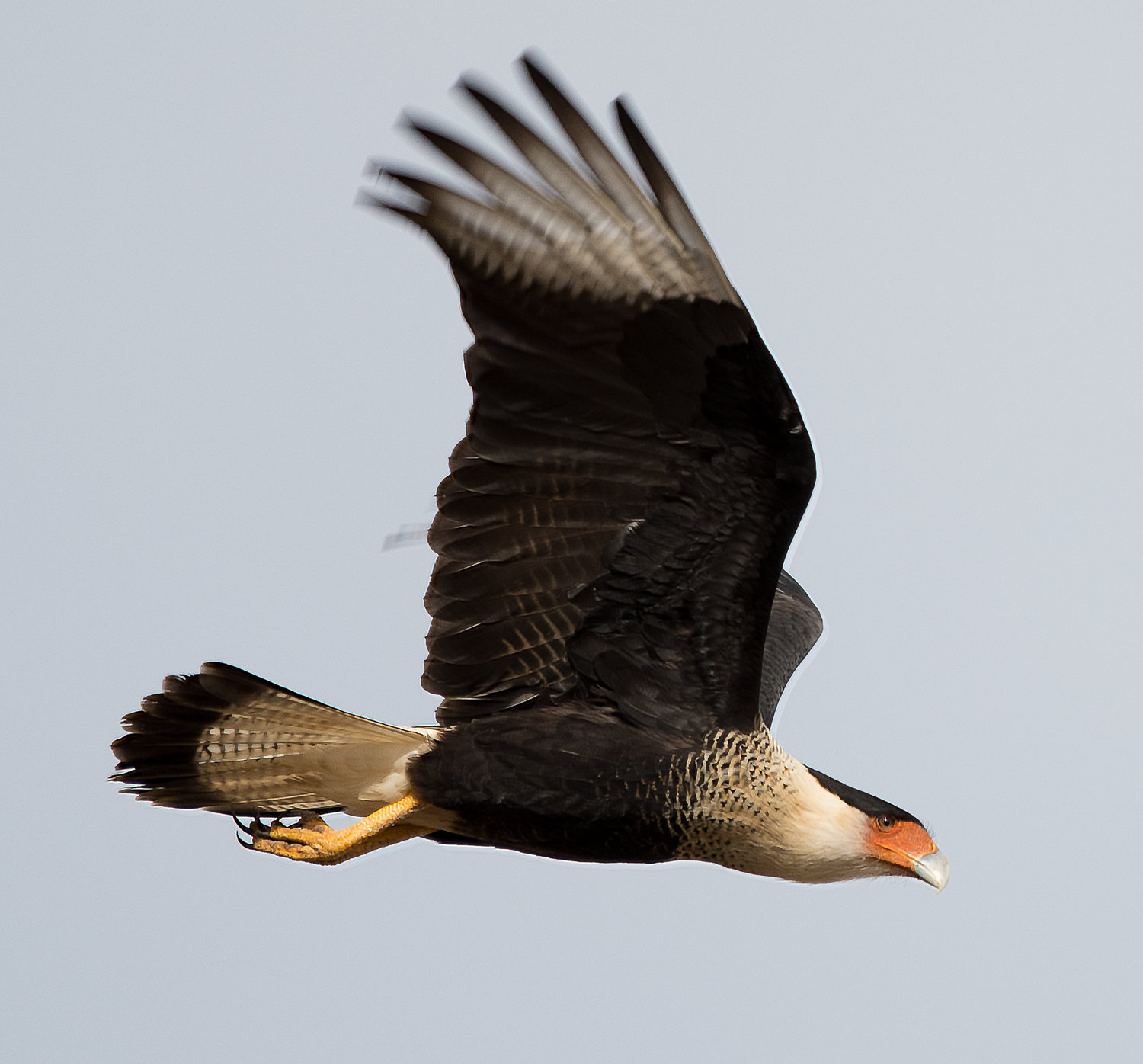Wood County bald eagle population tabulated
woodctystringer@gmail.com
The word most often used to describe the bald eagle is majestic. Whether it is the penetrating look, the powerful contour of the shoulders and wings or the elegance of the bird in flight, the word is 100% accurate.
This item is available in full to subscribers.
Attention subscribers
To continue reading, you will need to either log in to your subscriber account, or purchase a new subscription.
If you are a current print subscriber, you can set up a free website account and connect your subscription to it by clicking here.
If you are a digital subscriber with an active, online-only subscription then you already have an account here. Just reset your password if you've not yet logged in to your account on this new site.
Otherwise, click here to view your options for subscribing.
Please log in to continue |
Wood County bald eagle population tabulated
The word most often used to describe the bald eagle is majestic. Whether it is the penetrating look, the powerful contour of the shoulders and wings or the elegance of the bird in flight, the word is 100% accurate.
One of the many special gifts of living in East Texas is the proximity to the large lakes of the area. Those lakes have become adoptive homes to a growing number of bald eagles.
Each year, local outdoorsmen and -women round up to conduct an eagle count at Lake Tawakoni and Lake Fork.
The eagle count is conducted over two days. The number of eagles sighted on the first day is confirmed by conducting a second count using the same procedures on the following day.
On a cold Saturday morning a group of intrepid eagle enthusiasts gathered for a fortifying breakfast at Oak Ridge Marina. It was there at the foot of the Hwy. 154 bridge in a back room at the marina where one of the secrets of the eagle count was revealed: good breakfast conversation.
Sharing a couple of long tables pushed together, the group’s conversation covered a gamut of topics. Thankfully, politics was not among them. The proper consistency of gravy for biscuits and gravy was discussed, as was Bigfoot, fog, the size of otters and the biggest alligator snapping turtle anyone had ever seen.
The recent change to the Eugene Ditch – a favorite fishing hole – was also discussed, as were the excellent sandwiches available at the Golden Grocery and the impact of the new Garmin Livescope on crappie populations.
The food and conversation made for a delayed start as the camaraderie kept everyone in their chairs a few minutes longer.
Teams were then split up and dispatched to the dam and the reaches of the lake.
The group checking the southern lake did not have to wait long for their first sighting, as an eagle graced the top of a tall dead tree just east of the dam.
The 2021 annual count was conducted Jan. 7-10. The observation team sighted 14 eagles at Lake Tawakoni and 13 at Lake Fork.
“The resurgence of the eagle population is a good news story,” stated eagle count leader Sanford Valentine. He explained how the commercial use of certain pesticides had decimated the native bald eagle population in the late 20th century.
Thankfully, the population of eagles has rebounded and the large lakes of East Texas have found favor as seasonal homes for the national bird. Eagles bear their young over the course of a winter, so it is in the treetops of the forested banks of Lake Fork where they are often seen.
Texas Parks and Wildlife Department (TPWD) Bald Eagle Coordinator Trey Barron explained, “There are two populations of eagles in Texas, those nesting pairs who come to breed every year and the seasonal population which comes to winter-over in Texas.”
Barron estimated that there are close to 300 nesting pairs in the state. That number is up from the single digits recorded in the 1970s.
TPWD monitors eagle nesting sites statewide. The last aerial survey of eagle nesting sites was flown in 2005. The program has been a victim of budget cuts. In its absence, the state relies on voluntary reporting of eagle sightings and nest locating, under the auspices of the Bald Eagle Nest Project.
The Christmas bird count data, like that just completed by Valentine and his team, is very valuable to the project, Barron related.
In addition to helping with the annual eagle count at Lake Fork, one can also submit data to TPWD through the Inaturalist website. Nesting site locations and photographs may be submitted at any time to the project on iNaturalist.
Valentine is in his third year as leader of the local eagle count. Before his death, the late Vincent Palmisano, who had led the count for 23 years, had asked Valentine to continue the annual effort.
The eagle count is in good hands under Valentine’s charge. Judging from the knowledge and commitment of those who joined him on that cold Saturday morning, the county is also home to many sportsmen and -women who cherish the lands and the native wildlife.
Eagle photos with this article are the work of local eagle enthusiast, Chad Craddock.













